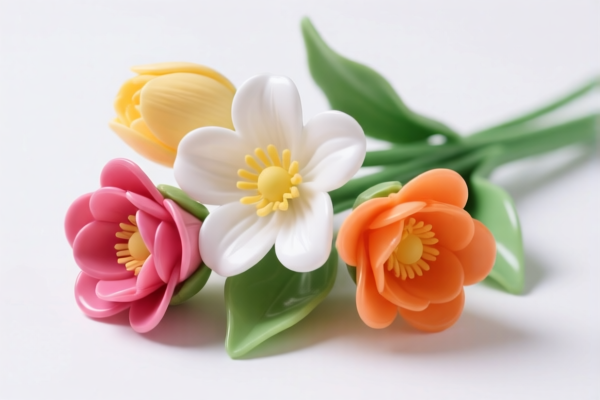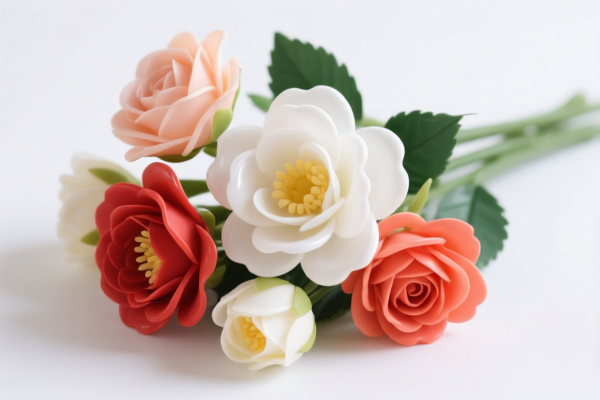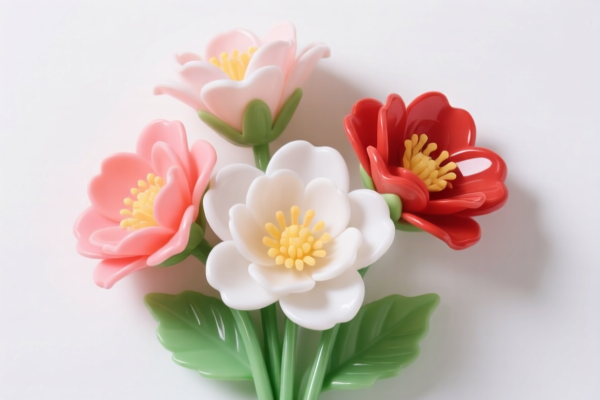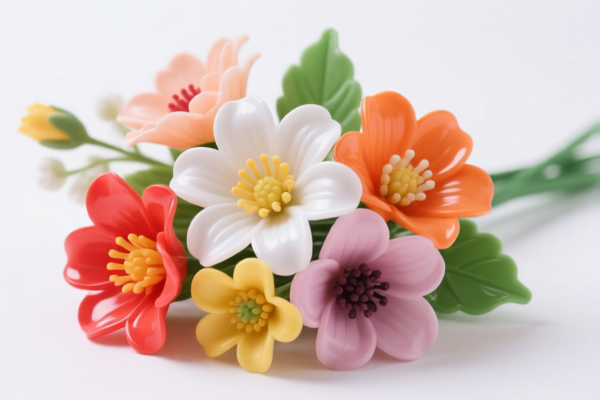| HS Code | Official Doc | Tariff Rate | Origin | Destination | Effective Date |
|---|---|---|---|---|---|
| 6702102000 | Doc | 38.4% | CN | US | 2025-05-12 |
| 6702104000 | Doc | 33.4% | CN | US | 2025-05-12 |
| 3926400090 | Doc | 35.3% | CN | US | 2025-05-12 |
| 3921904010 | Doc | 34.2% | CN | US | 2025-05-12 |
| 3921905010 | Doc | 34.8% | CN | US | 2025-05-12 |
| 9503000090 | Doc | 30.0% | CN | US | 2025-05-12 |
| 9505104020 | Doc | 30.0% | CN | US | 2025-05-12 |
| 9505105020 | Doc | 30.0% | CN | US | 2025-05-12 |




Artificial Flower
Artificial flowers are recreations of flower blossoms made from materials other than natural ones. They are used for decorative purposes and are often employed as alternatives to real flowers due to their longevity and cost-effectiveness.
Materials
A diverse range of materials are utilized in the construction of artificial flowers, evolving significantly over time. Common materials include:
- Silk: Historically, silk was a primary material, offering a realistic texture and appearance.
- Polyester: Now widely used, polyester is durable, affordable, and can be easily molded and dyed.
- Latex: Provides a natural look and feel, often used for flower petals and leaves.
- Plastic: Versatile and inexpensive, used for stems, leaves, and sometimes petals.
- Foam (Foamiran): A lightweight, pliable material allowing for detailed shaping and coloring.
- Paper: Used for origami flowers or delicate, decorative blooms.
- Wood: Used for stems or structural components.
- Metal: Employed for stems, particularly in more artistic or permanent arrangements.
Purpose
- Decoration: The primary purpose is aesthetic enhancement of homes, offices, events, and other spaces.
- Allergy Relief: Provides a floral aesthetic without triggering allergies.
- Longevity: Offers a lasting decorative solution, unlike the short lifespan of fresh flowers.
- Cost-Effectiveness: Can be a more economical choice, especially for large arrangements or events.
- Event Decoration: Frequently used in weddings, parties, and other special occasions.
- Crafting & DIY: Used as components in various floral arrangements and craft projects.
Function
Artificial flowers function primarily as visual representations of natural blooms. They do not possess the biological functions of real flowers, such as reproduction or scent production (although some may be artificially scented). Their function is solely aesthetic and decorative.
Usage Scenarios
- Home Décor: Centerpieces, vase arrangements, wall decorations, wreaths.
- Event Planning: Wedding bouquets, table decorations, venue styling.
- Commercial Displays: Retail store decorations, hotel lobbies, restaurant ambiance.
- Funeral Arrangements: Sympathy tributes, memorial decorations.
- Craft Projects: Floral crowns, hair accessories, decorative artwork.
- Photography & Film: Props for photoshoots and movie sets.
Common Types
- Silk Flowers: Traditional and often high-quality, offering a realistic appearance.
- Polyester Flowers: Durable and affordable, available in a wide range of colors and styles.
- Foam Roses: Popular for their soft texture and customizable appearance.
- Paper Flowers: Delicate and often handmade, used for decorative accents.
- Latex Flowers: Closely resemble real flowers, with a natural feel.
- Dried Flowers (sometimes categorized as artificial): Preserved natural flowers offering a rustic aesthetic.
- Orchids: A popular choice for elegant arrangements.
- Roses: A classic and versatile flower.
- Hydrangeas: Commonly used in large arrangements.
- Sunflowers: Offer a bright and cheerful aesthetic.
Artificial flowers, foliage and fruit, and parts thereof, are covered under Chapter 67, specifically focusing on preparations of vegetable fibres, vegetable wadding, vegetable stuffs for stuffing, and articles of straw or of other vegetable stuffs. These items can be made of plastics or other materials.
The following HS codes are relevant to “ARTIFICIALFLOWER”:
- 6702102000: This code covers artificial flowers, foliage and fruit made of plastics, assembled by binding with flexible materials such as wire, paper, textile materials, or foil, or by gluing or by similar methods. The base tariff is 8.4%, with no additional tariffs currently, but a 30.0% additional tariff will apply after April 2, 2025, resulting in a total tariff of 38.4%.
- 6702104000: This code also covers artificial flowers, foliage and fruit made of plastics, but includes “Other” items, including parts. The base tariff is 3.4%, with no additional tariffs currently, but a 30.0% additional tariff will apply after April 2, 2025, resulting in a total tariff of 33.4%.
Important Note: Regarding HS codes 6702102000 and 6702104000, please be aware of the upcoming tariff changes on April 2, 2025. The additional tariff will increase from 0.0% to 30.0% on that date.
Customer Reviews
No reviews yet.